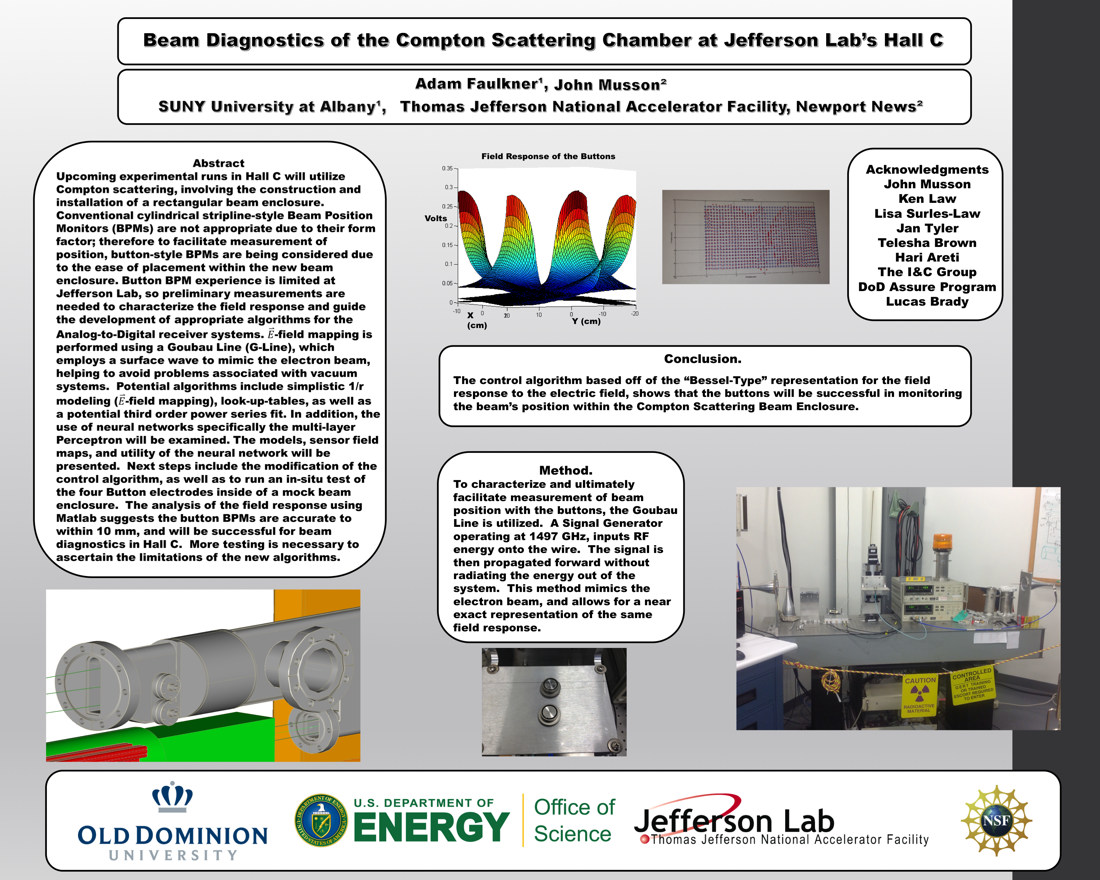Undergraduate Research at Jefferson Lab
Beam Diagnostics of the Compton Scattering Chamber in Jefferson Lab's Hall C
Student: Adam Faulkner
School: State University of New York at Albany
Mentored By: John Musson
Upcoming experimental runs in Hall C will utilize Compton scattering, involving the constructions and installation of a rectangular beam enclosure. Conventional cylindrical stripline-style Beam Position Monitor (BPMs) are not appropriate due to their form factor; therefore to facilitate measurement of position, button-style BPMs are being considered due to the ease of placement within the new beam enclosure. Button BPM experience is limited at Jefferson Lab, so preliminary measurements are needed to characterize the field response and guide the development of appropriate algorithms for the Analog-to-Digital receiver systems. E-field mapping is performed using Goubau Line (G-Line), which employs a surface wave to mimic the electron beam, helping to avoid problems associated with vacuum systems. Potential algorithms include simplistic 1/r modeling (E-field mapping), look-up-tables, as well as a potential third order power series fit. In addition, the use of neural networks specifically the multi-layer Perceptron will be examined. The models, sensor field maps, and utility of the neural network will be presented. Next steps include the modification of the control algorithm, as well as to run an in-situ test of the four Button electrodes inside of a mock beam enclosure. The analysis of the field response using Matlab suggests the button BPMs are accurate to within 10 mm, and will be successful for beam diagnostics in Hall C. More testing is necessary to ascertain the limitations of the new algorithms.

Citation and linking information
For questions about this page, please contact Education Web Administrator.
